The Amazing Flying Wing – Images You Haven’t Seen Before?!
All five crew members lost their lives that day, including Californian Capt. Glen Edwards who was flying as co-pilot with Maj. Daniel Forbes Jr. At the request of retired Maj. Gen. Albert Boyd (then Col. Boyd), Muroc Air Force Base was redesignated Edwards Air Force Base on Dec. 8, 1949 in honor of the young captain’s heroism and sacrifice.
According to retired Brig. Gen. Robert Cardenas, who served as the chief test pilot on the YB-49 program, Jack Northrop’s vision of the flying wing was a revolutionary concept; it was just too advanced for 1940’s technology.
In November 1948, Cardenas appeared before Jack Northrop and the General Officer’s Board to share his perspective on the controversial program.
“When I appeared before the board, I told them Mr. Northrop’s concept is going to give you one of the most potent weapon systems you’ve ever had. But, the YB-49 has exceeded the human sensory and response capability because we humans are reactive. This aircraft needs a proactive system and I don’t know what it is,” said Cardenas.
The YB- 49 project superseded the Northrop XB-35 and YB-35 which were experimental heavy bomber aircraft developed by the Northrop Corporation for the United States Army Air Forces during and shortly after World War II. The airplane used the radical and potentially very efficient flying wing design, in which the tail section and fuselage are eliminated and all payload is carried in a thick wing.
Only prototype and pre-production aircraft were built, although interest remained strong enough to warrant further development of the design as a jet bomber, under the designation YB-49. The crash of a YB-49 in June 1948 occurred when Capt. Glen Edwards forced the plane into a low speed high angle stall, flight testing of YB-49 #1 continued until March of 1950 when the tire on the nose wheel failed during high speed taxi test. Testing continued for a short time more on the YRB-49A.
It was clear that the airforce did not want Jack Northrup’s flying wing and never gave a fair assessment of it. The biggest problem was the both the B-35 and the B-49 were in direct competition with Boeing projects, the B-50 and the B-47 respectively,and Boeing was determined not to miss out like they had with the B-36.

The
YRB-49A was a strategic reconnaissance version of the flying wing,
created from YB-35B #42-102376. Photographic equipment was installed in
the tail cone bay. Its first flight was on 5/4/1950.

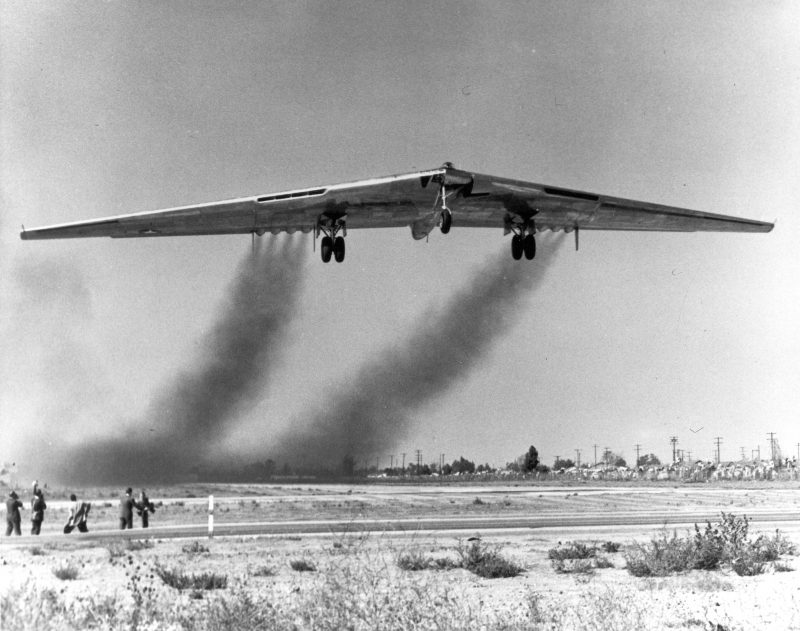
The
YB-49 lifts off from Northrop Field for its first flight. Northrop’s
chief test pilot Max Stanley flew the ship the short distance to Muroc
AFB, where it would begin its testing.
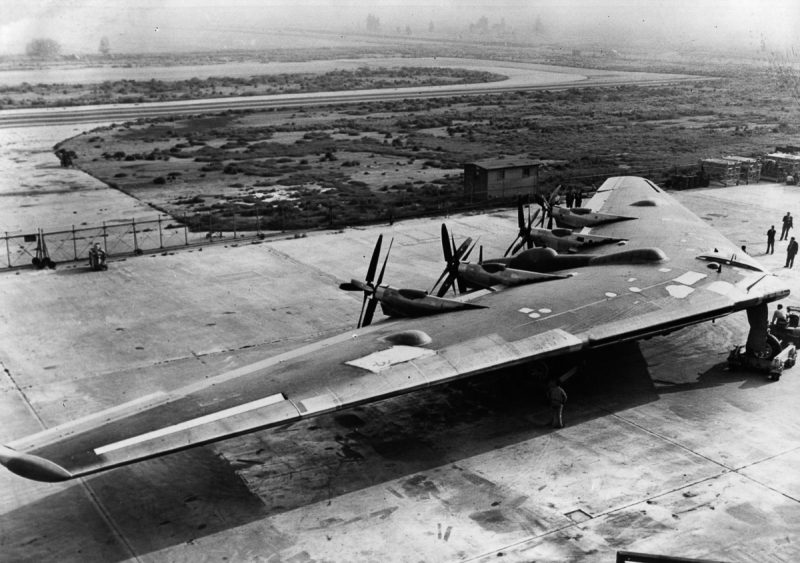
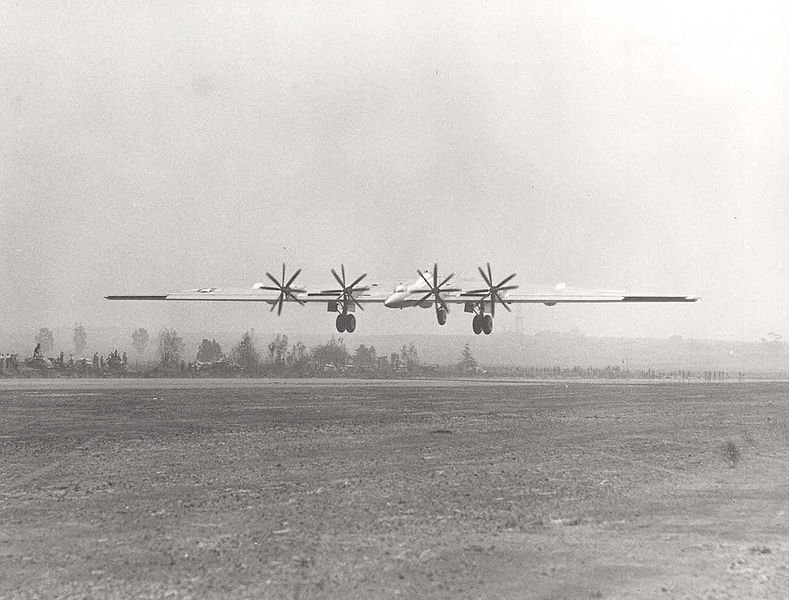
Northrop XB-35 Flying wing, a heavy bomber prototype
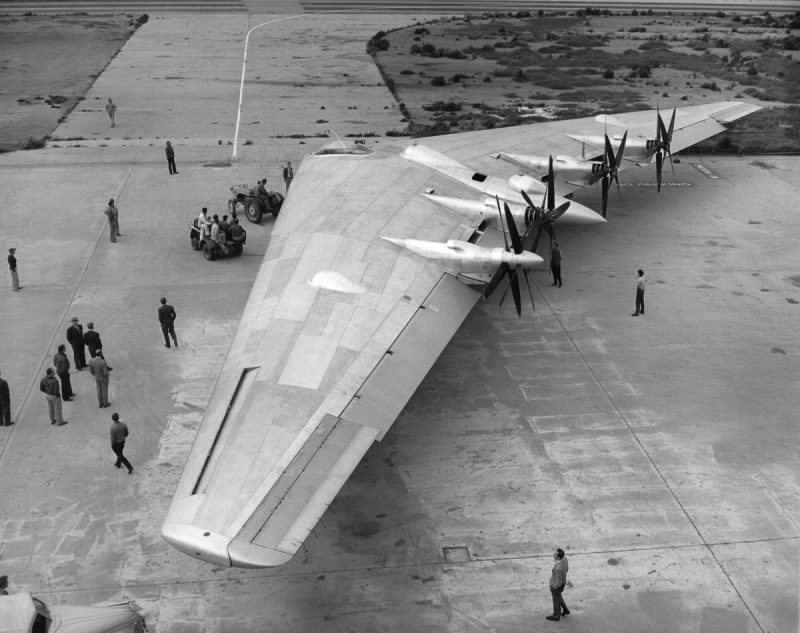
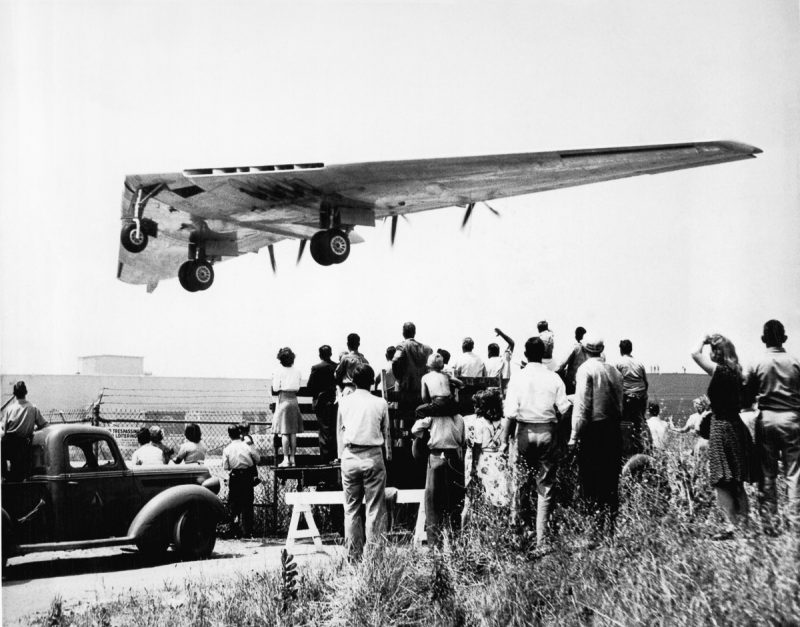
Northrop’s Flying Wing Bomber, XB-35, takes off on its maiden flight, Hawthorne, California, June 26, 1946.
The flying wing bombers enjoyed all the usual financial support and governmental interest normally associated with a wartime program. They also suffered through the chaotic period that came with war’s end. The program endured, however, because of the enormous potential demonstrated by the unique aircraft. The enthusiasm for the program that was demonstrated by the Northrop “family” was shared to a great extent by many of the technical and management people of the Army Air Forces. Their foresight, assistance, and encouragement kept the development program going through the rough times.
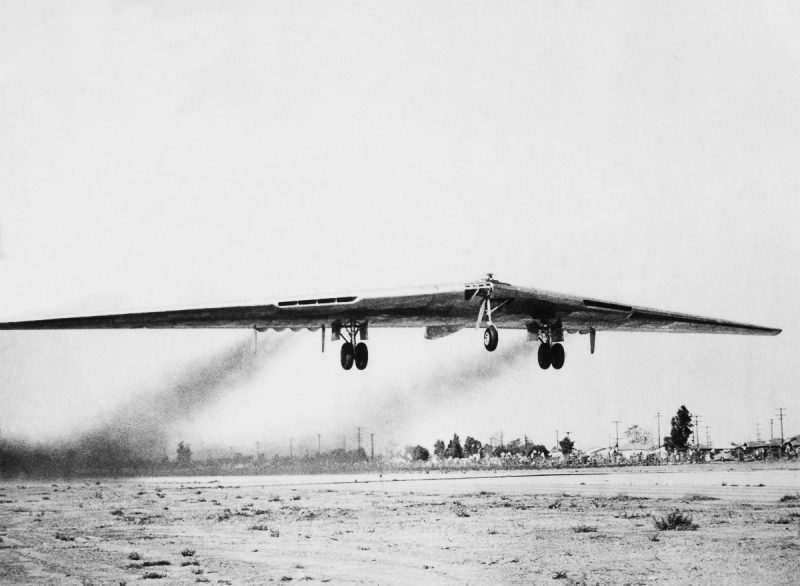
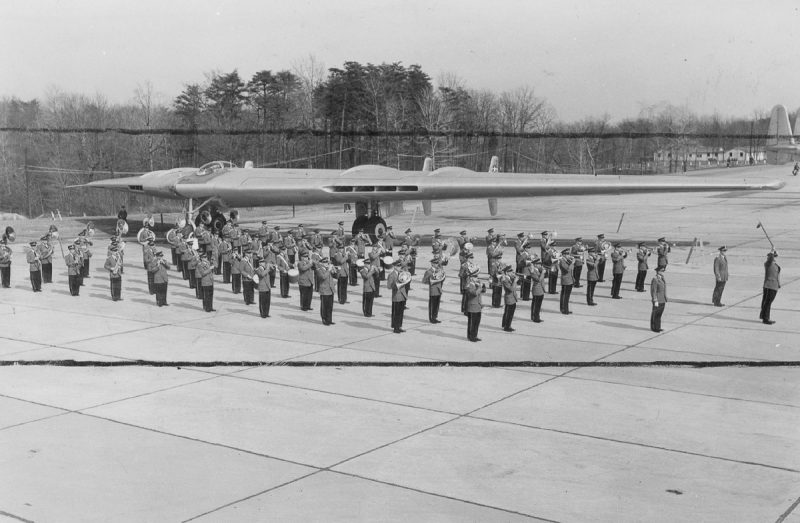
With a giant B-49 flying wing in the background, the noted air force band prepares for its Colorado concerts. The band will play for the governors’ convention in Colorado Springs June 19 and 20, then will come to Denver for a free concert in Red Rocks park June 21. Arrangements for the concert her made by The Denver Post and Air Secretary W. Stuart Symington.
being made to admit 10,000 persons to the concert in Red Rocks.
Credit: Air Force Photo
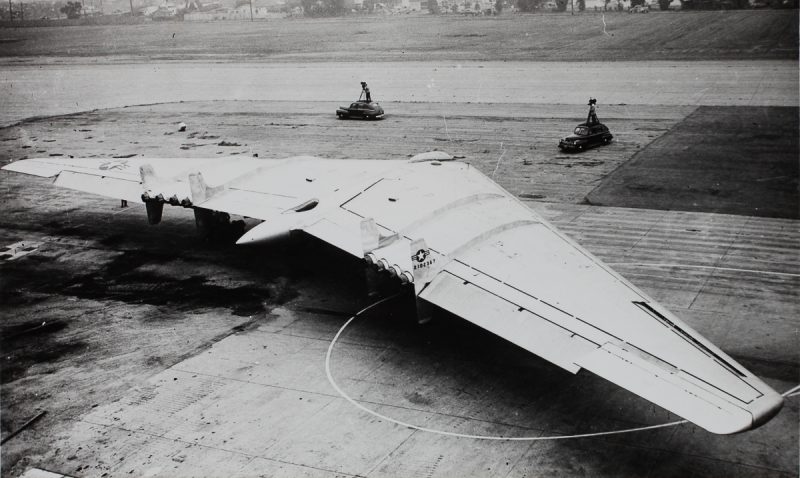
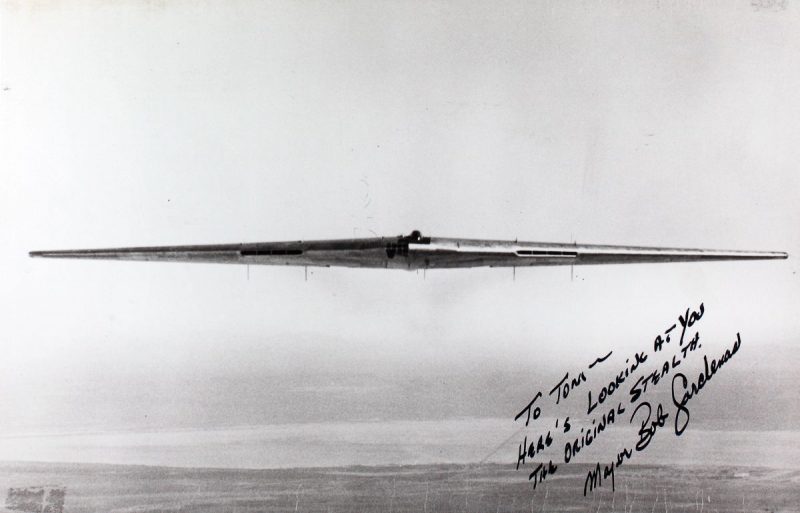

The Air Force ordered all the remaining YB-35/49 aircraft to be destroyed. This may be the remains of the YRB-49A.

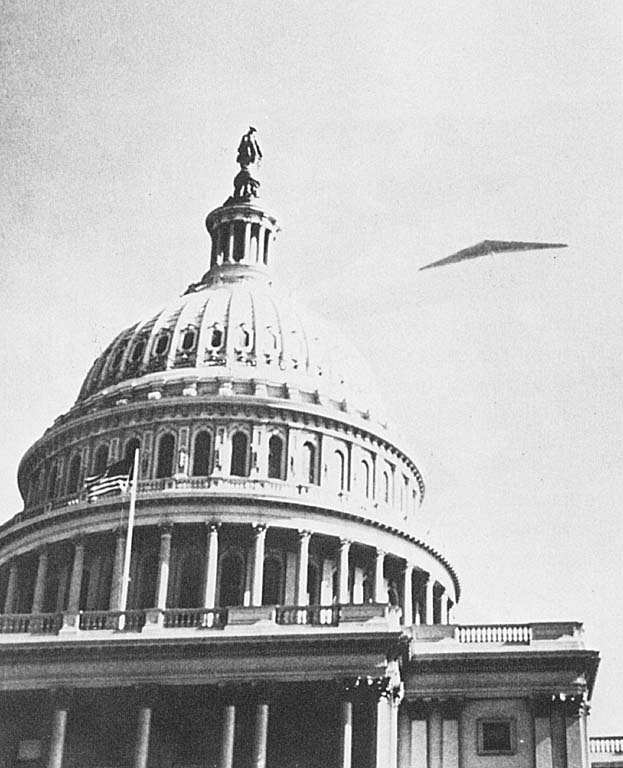
A classic picture of the YB-49 over the Capitol Building. It was too late for publicity to do any real good.
SHARES
| FacebookTwitter |
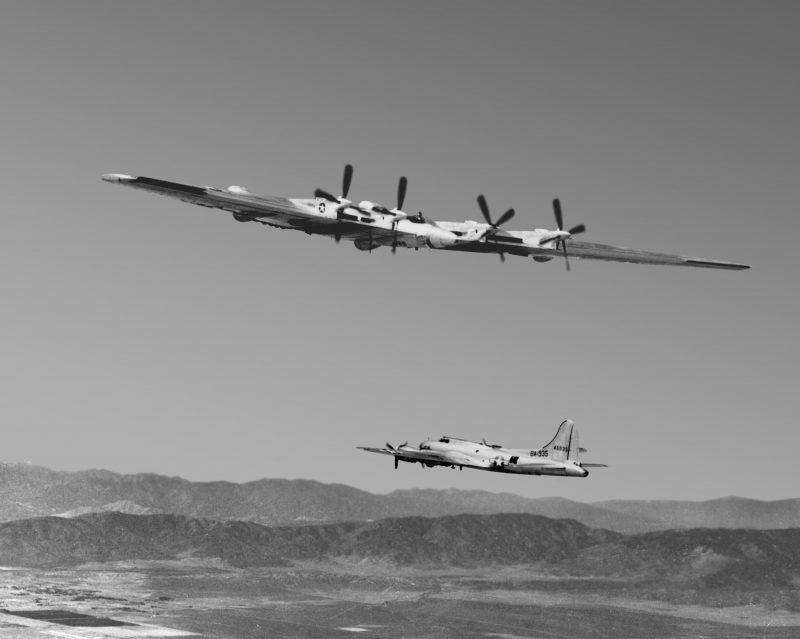
In
size, the XB-35 would dwarf the B-17 Flying Fortress, with wing area
and gross weight almost three times those of the legendary heavy bomber.


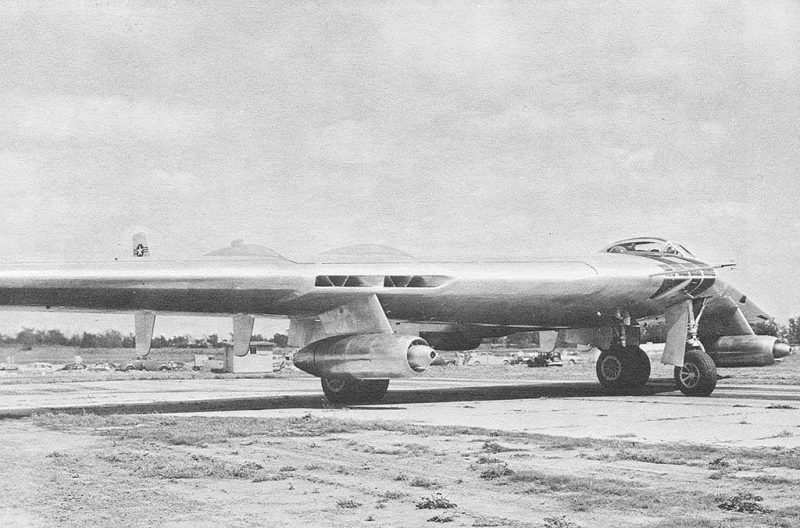
The clean lines of the flying wing were marred by the extra engines.

 Aircraft
designer John K. “Jack” Northrop stands in front of his YB-49 Flying
Wing bomber. Mainly due to political reasons, the YB-49 was never mass
produced. The last flight of the last Flying Wing took place on
4/26/1951. Eighteen months later, Jack resigned from Northrop Aircraft,
Inc., and left the aviation industry.
Aircraft
designer John K. “Jack” Northrop stands in front of his YB-49 Flying
Wing bomber. Mainly due to political reasons, the YB-49 was never mass
produced. The last flight of the last Flying Wing took place on
4/26/1951. Eighteen months later, Jack resigned from Northrop Aircraft,
Inc., and left the aviation industry.
#367 flies over Muroc Field. Two YB-49 prototypes were built from YB-35’s. #42-102368 was the second aircraft.
This
view of the first prototype Northrop XB-35, 42-13603, the “Flying
Wing”, on the ramp at Muroc Air Force Base shows the pusher arrangement
of four-bladed contra-rotating propellers. In the background, a
turbojet-powered YB-49 is in a right bank. (U,S. Air Force)
Artist’s rendition of a version of the YB-49 transforming into the B-2 Spirit. (U.S. Air Force Graphic by Jet Fabara)
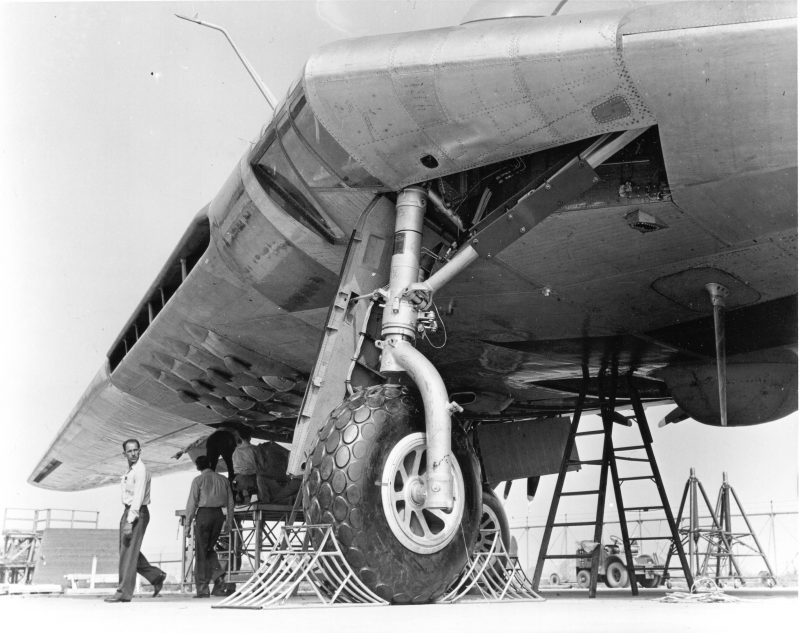

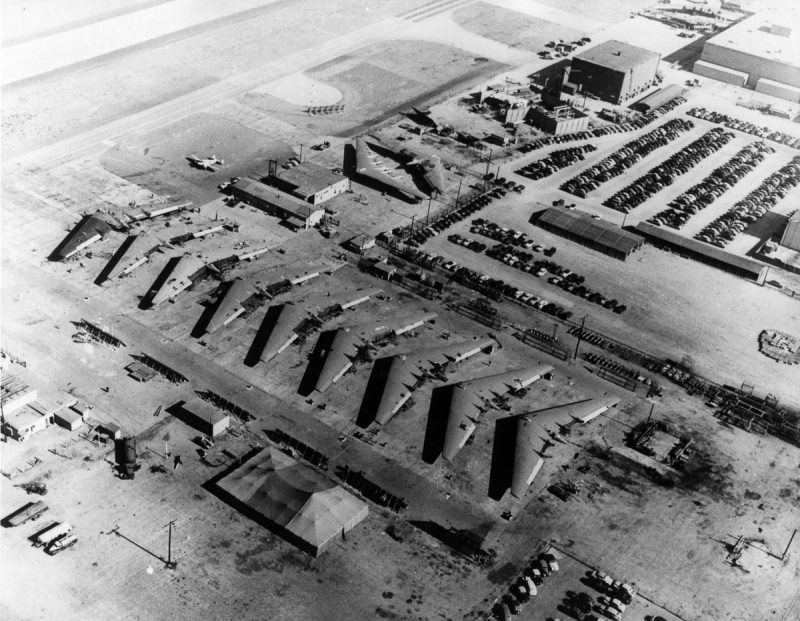


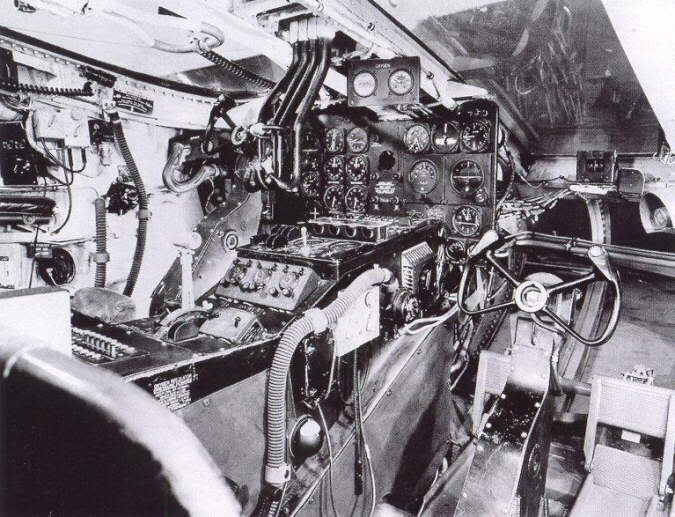
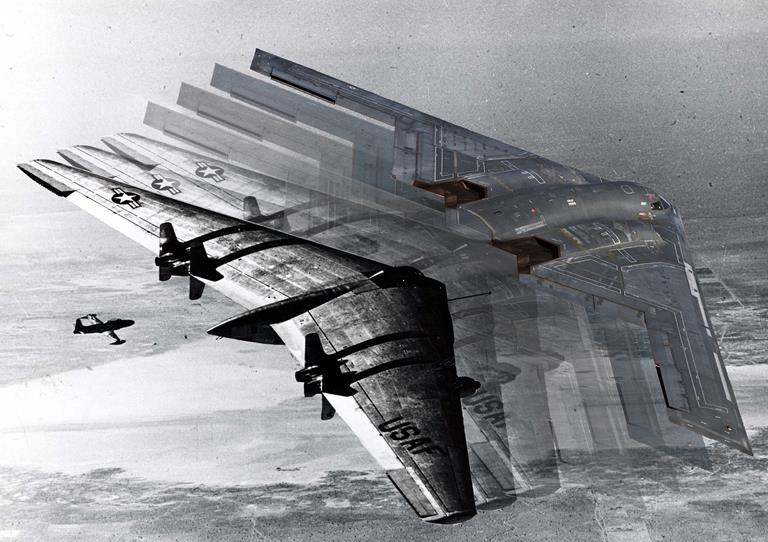

No comments:
Post a Comment